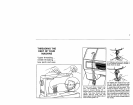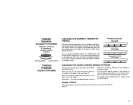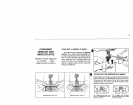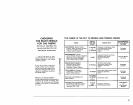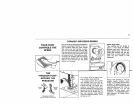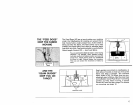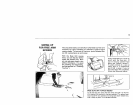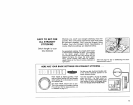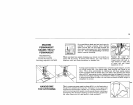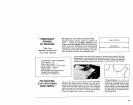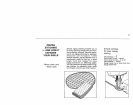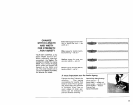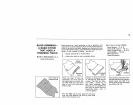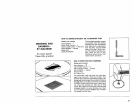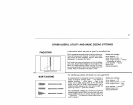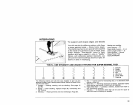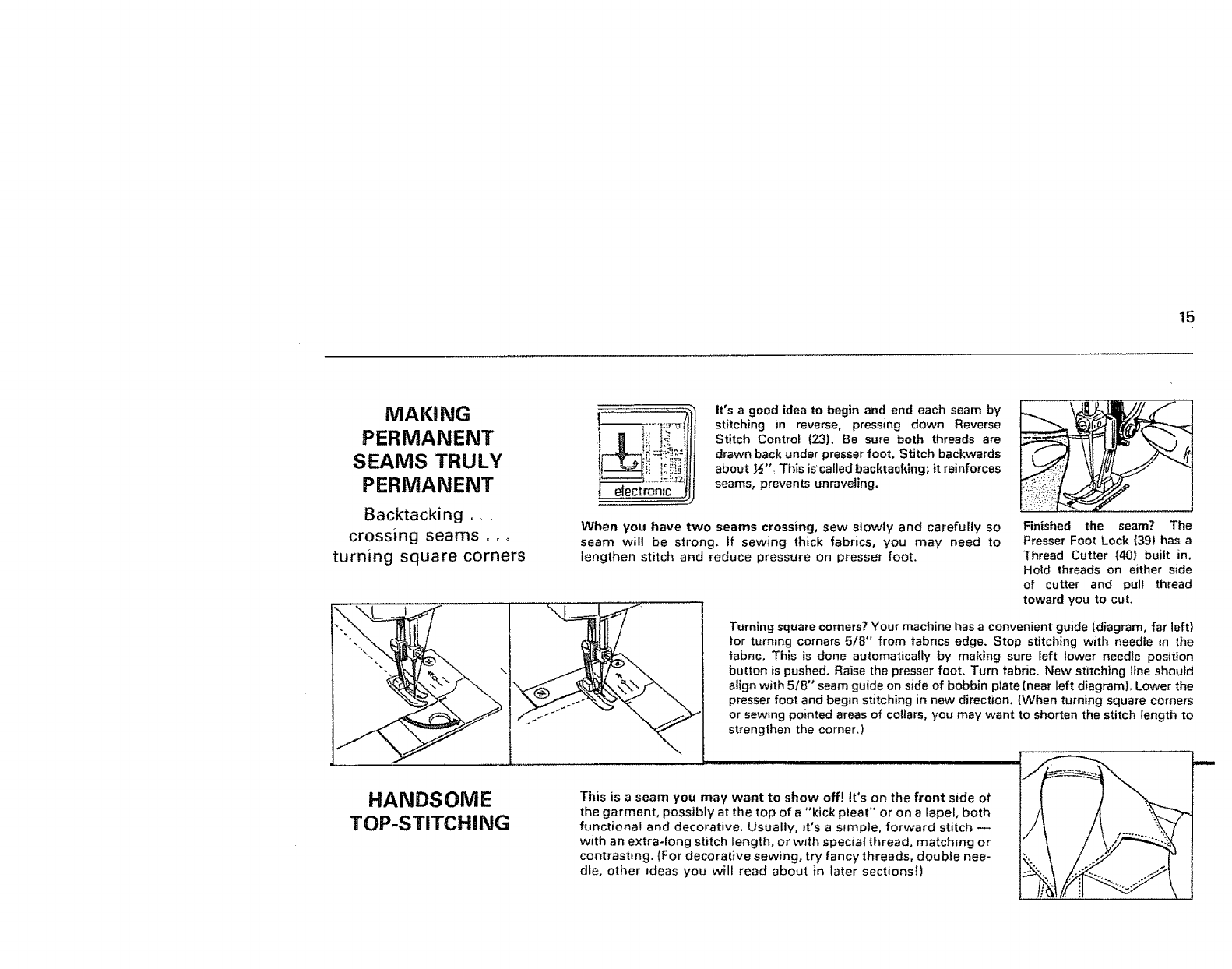
15
MAKING
PERMANENT
SEAMS TRULY
PERMANENT
Backtacking..,
crossing seams o_o
turning square corners
HANDSOME
TOP-STITCHING
, electronic ,,jjj
It's a good idea to begin and end each seam by
stitching in reverse, pressing down Reverse
Stitch Control (23). Be sure both threads are
drawn back under presser foot. Stitch backwards
about _", This iscalled backtacking; it reinforces
seams, prevents unraveling.
When you have two seams crossing, sew slowly and carefully so
seam will be strong, if sewing thick fabrics, you may need to
lengthen stitch and reduce pressure on presser foot.
Finished the seam? The
Presser Foot Lock (39) has a
Thread Cutter (40) built in,
Hold threads on either side
of cutter and pull thread
toward you to cut.
Turning square corners? Your machine has a convenient guide (diagram, far left)
for turning corners 5/8" from fabrics edge. Stop stitching with needle tn the
fabric. This is done automatica!ly by making sure left lower needle position
button is pushed. Raise the presser foot. Turn fabric. New stitching line should
align with 5/8" seam guide on side of bobbin plate(near left diagram), Lower the
presser foot and begin stitching in new direction. (When turning square corners
or sewing pointed areas of collars, you may want to shorten the stitch length to
strengthen the corner.)
This is a seam you may want to show of!! tt's on the front side of
the garment, possibly at the top of a "kick pleat" or on a lapel, both
functional and decorative. Usually, it's a simple, forward stitch m
with an extra-long stitch tength, or with special thread, matching or
contrasting. {For decorative sewing, try fancy threads, double nee-
die, other ideas you will read about in later sections|)



